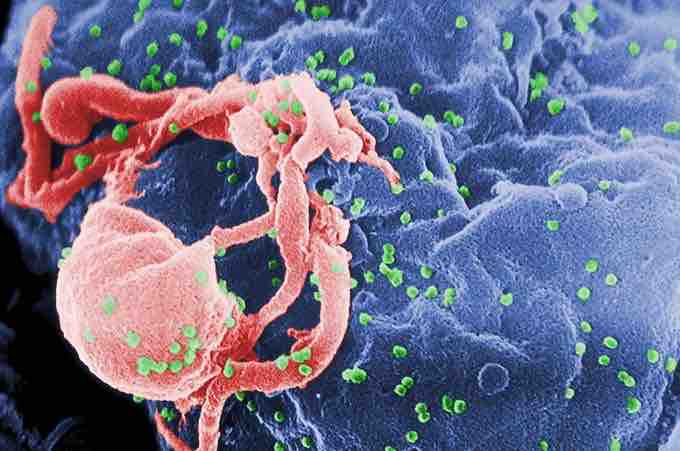In the general realm of biology, an opportunist is an organism that is able sustain its life from a number of different sources, but when favorable conditions arise, the organism immediately takes advantage of the opportunity to thrive. When the focus is turned more specifically to microbiology, scientists call organisms that behave this way opportunistic microorganisms. A microorganism is a microscopic organism that can either be a single cell, cell cluster, or multicellular. Microorganisms are very diverse and include bacteria, fungi, algae, and protozoa. Opportunistic microorganisms are typically non-pathogenic microorganisms that act as a pathogen in certain circumstances. They lay dormant for long periods of time until the hosts' immune system is suppressed and then they seize the opportunity to attack.
Patients with Human Immunodeficiency Virus (HIV) are particularly susceptible to opportunistic infections. HIV can develop into Acquired Immune Deficiency Syndrome (AIDS), which infects and destroys helper T cells (specifically CD4+ T cells). When the number of CD4+ T cell numbers fall below a critical level, cell-mediated immunity is lost. When immunity is lost, the opportunistic microorganisms can easily infect the AIDS patient without being destroyed by the immune system. These opportunistic pathogens thrive while the human body slowly deteriorates.

HIV
This is a magnified view of HIV budding from a lymphocyte.
An example of an opportunistic microorganism is Haemophilus ducreyi. This microorganism infects its host through broken skin or epidermis. In other words, without an open wound, this sexually transmitted disease would be unable to use the human body as a host. It takes advantage of the opportunity to infect the lymphocytes, macrophages and granulocytes as soon as it enters the area of broken skin.